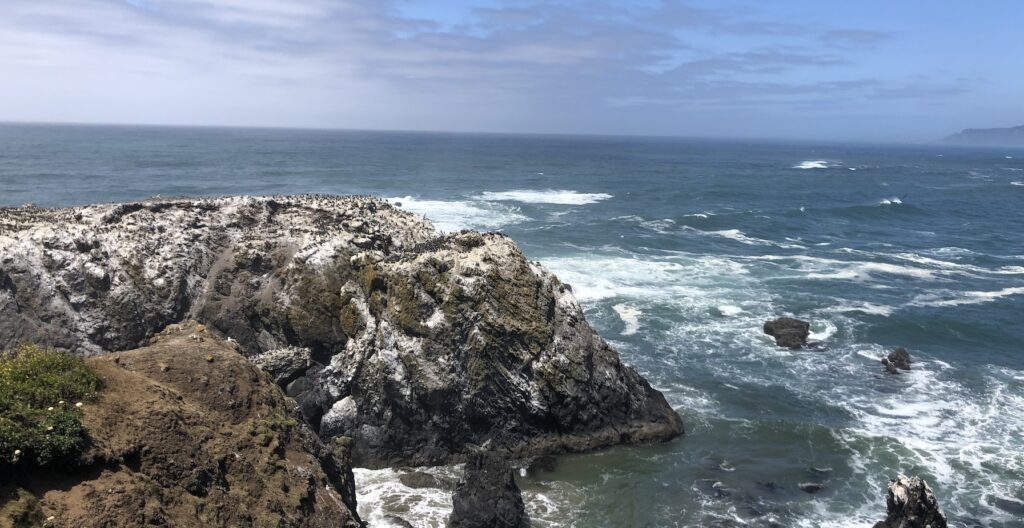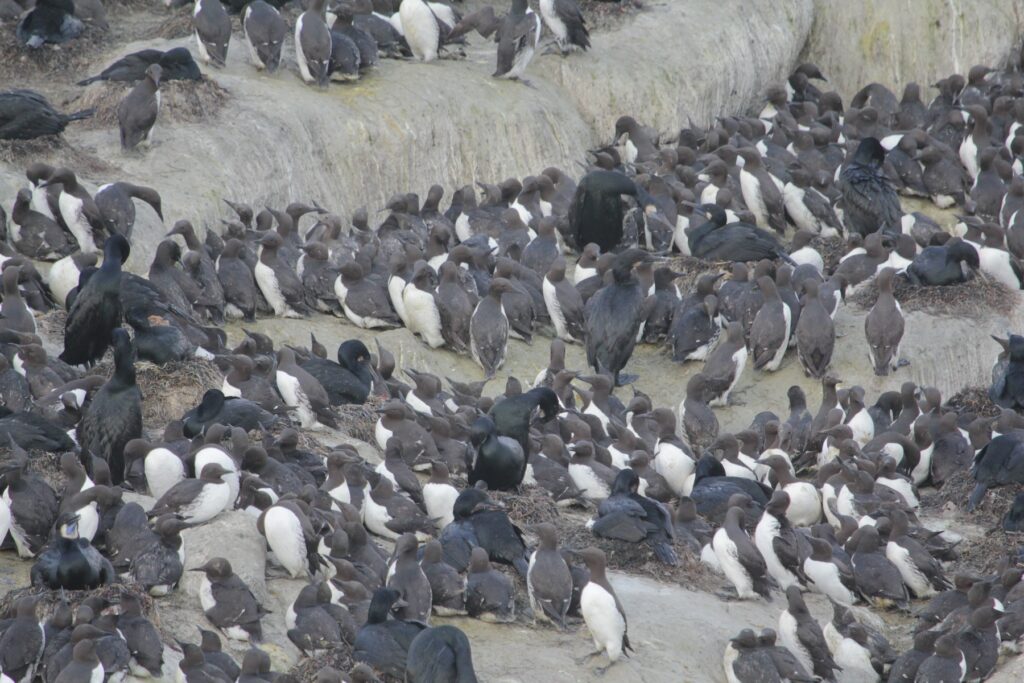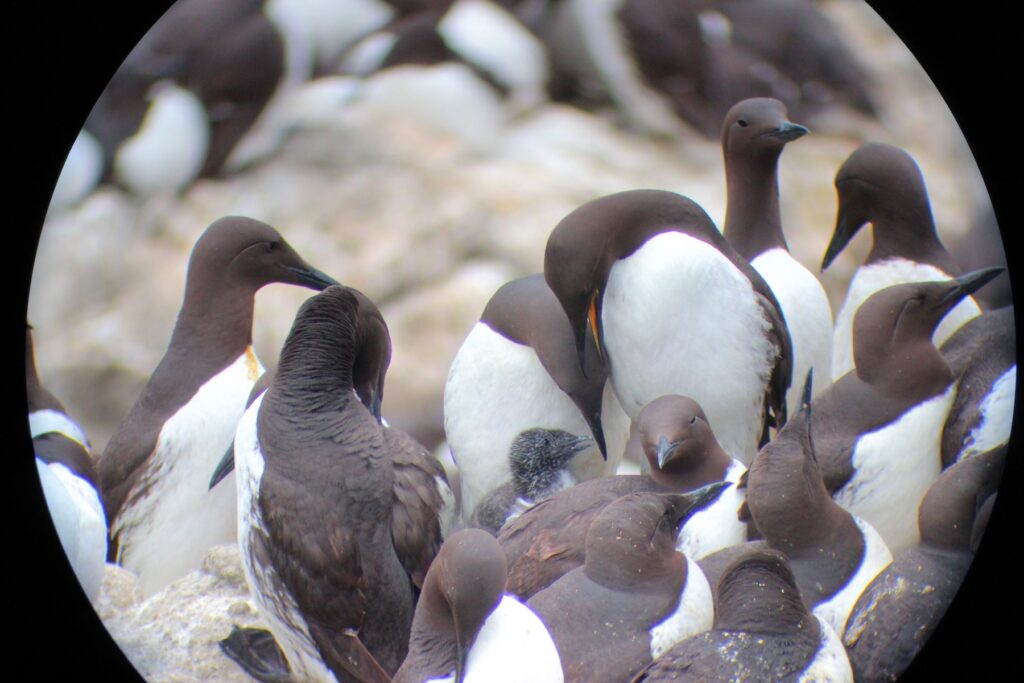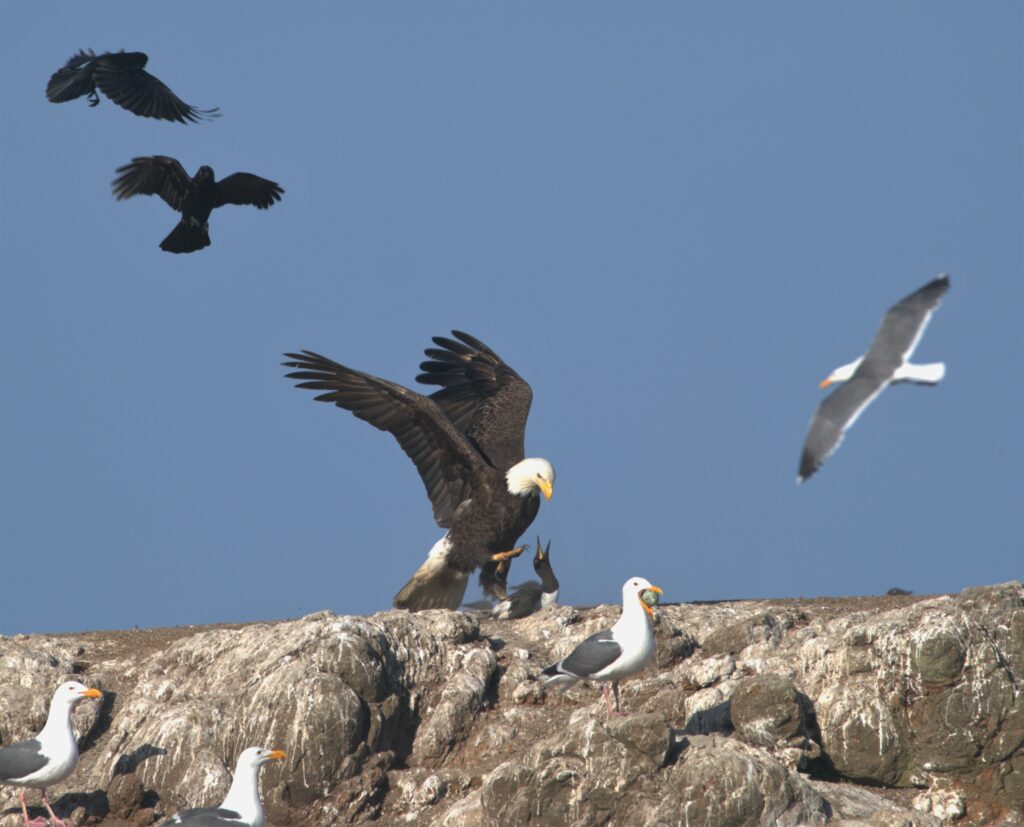By Cherish Lyda, Seabird Monitoring Technican, OSU Seabird Oceanography Lab

Hello everyone!
My name is Cherish Lyda, and I’m a senior at Oregon State University, majoring in Fisheries, Wildlife, and Conservation Sciences with a focus on avian conservation and management. This summer, I’m the Yaquina Seabird Monitoring Technician for the Seabird Oceanography Lab. This is my first season working with seabirds – and it has been amazing so far!
Despite frequent Bald Eagle disturbances, Yaquina Head Outstanding Natural Area is once again bursting with new life! Although nesting started late this year, the birds have shown resilience and are beginning to proudly display their chaotic nests and adorable chicks. We are currently monitoring 13 plots and following 93 Common Murre nests, 36 Brandt’s Cormorant nests, 28 Pelagic Cormorant nests, and 13 Western Gull nests.



Western Gulls hatched first and are already wrapping up the season with seven successfully fledged nests. (Take a look at the top of Colony Rock and you’ll see these brown spotted fluff balls wandering around!) Brandt’s Cormorants started hatching on July 2nd and 21 nests have hatched so far with more on the way. Pelagic Cormorants have taken up their usual spots at Smuggler’s Cove and Whale Rock, and we saw our first chick on July 9th.

As for the Common Murres, their season started out tough but is now looking very promising. Frequent early-season eagle activity hit the south half of Colony Rock and top of Whale Rock hard, clearing multiple plots of eggs. For a couple days, two immature Bald Eagles were seen perching continuously on the rocks. However, as eagle activity dropped off in late June, the murres regrouped and began laying again (along with lots of Brandt’s Cormorants) in the center and south parts of Colony Rock. The decrease in disturbances seems to have bolstered the murres’ courage, and they are starting to stay on their eggs during disturbances. Instead of flushing in panic, they’re standing their ground. It’s risky, but it seems to be paying off with fewer eggs being lost to the surrounding gulls.
We confirmed our first murre chicks on July 14th and we are now up to 25+ hatched with many more on the way. The parents are now busy bringing fish to colony, and it’s been cute watching the murres attempt to feed their eggs small fish – a sign that they are getting close to hatching!

As for other avian species, Tufted Puffins continue to make occasional, delightful fly-bys. We’ve seen both single birds and a pair flying loops and heading north. The noisy Black Oystercatchers have been busy with nests at both field sites and Pigeon Guillemots are on their nests tucked deep into the cliffs of Smuggler’s Cove. Listen for their high-pitched, squeaky whistles coming from the rocks!
In addition to Yaquina Head, we have been keeping a close eye on Pirate Cove in Depoe Bay. With almost no eagle disturbance (none since mid-June), the birds have been doing great. As of this writing, 42 of our 97 murre nests have hatched. Amazingly, every one of our 31 Brandt’s Cormorant nests have hatched chicks! Although our Pelagic Cormorants have been nesting in some hard-to-see cliffs, we were able to confirm their first hatches this last week as well.

Now that murre chicks have arrived, we’ll soon be conducting all-day nest watches to observe how often adults deliver food to their chicks. We’re also continuing to collect bill load photos of their prey items for diet analysis.
Working alongside Dr. Rachael Orben, the interns, and other researchers on this project has been amazing. I’ve gained so much knowledge about seabird life history and current research from our conversations and time together in the field and lab. Being able to wake up each morning at sunrise to the salty wind in my hair, the raucous calls of the murres, and the flaring brilliant blue throats of the cormorants has been an incredible way to spend my summer.
I can’t wait to see what the rest of the season brings — stay tuned!






